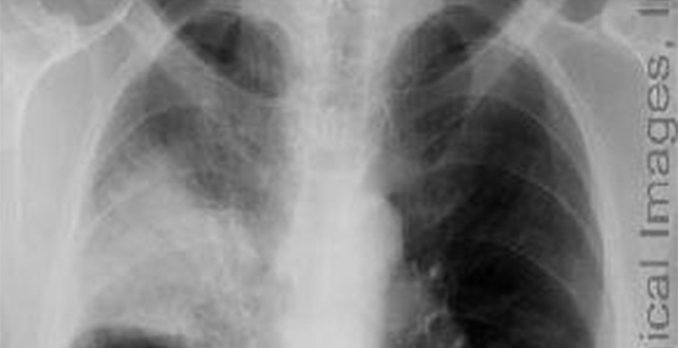Correct diagnosis is coccidioidomycosis, also known as desert fever, a deep fungal infection (Coccidioides immitis) acquired via the respiratory route. Coccidioidomycosis is endemic in the southwestern U.S.
Sixty percent of infected individuals are asymptomatic; infection is indicated only by Spherulin or Coccidioidin antigen skin test. The remaining infected individuals develop a flu-like illness one to four weeks after exposure.
Clinical presentation includes dry cough, pleuritic chest pain, myalgia, arthralgia, fever, sweats, anorexia, and weakness. An erythematous rash, erythema multiforme, or erythema nodosum may be seen. Chest x-ray will show single or multiple areas of consolidation, which can progress into thin-walled cavities. Pleural effusions and lymph node enlargement can occur in some cases. Infection is typically self-limited, lasting weeks, and can resolve without therapy.
One out of every 200 symptomatic patients will develop extrapulmonary disease that can spread hematogenously and progress to meningitis, miliary lung granulomas, or hydrocephalus. In patients with the disseminated form, antifungal chemotherapy is essential.
Serology and Spherulin or Coccidioidin skin tests may be negative in patients with disseminated disease or in those who are already immunocompromised. Bronchoscopic evaluation may help establish the diagnosis. Per the CDC, coccidioidomycosis is a Nationally Notifiable Disease via the National Notifiable Diseases Surveillance System (NNDSS). Obtain an infectious disease consult for therapeutic guidance.
Case presented by Logical Images, Inc.
[taq_review]

